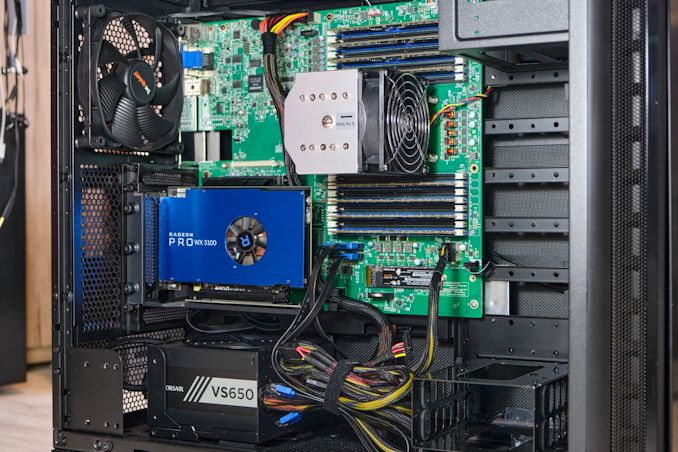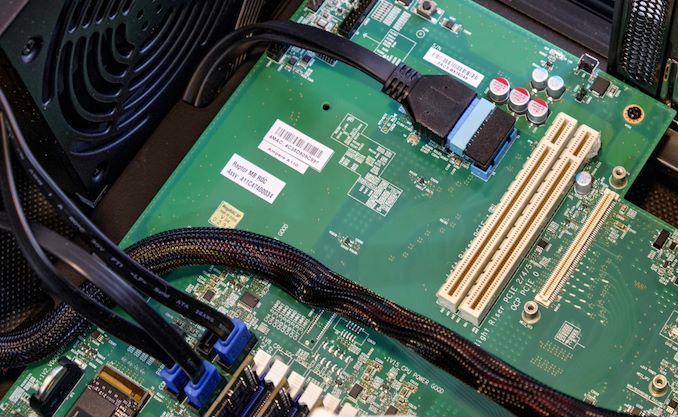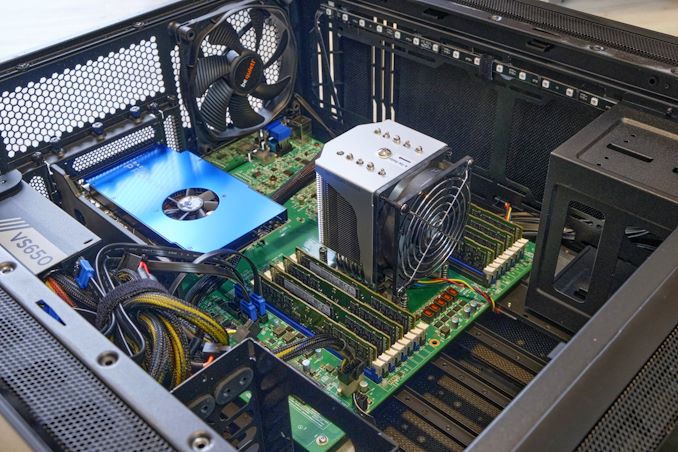Avantek's Arm Workstation: Ampere eMAG 8180 32-core Arm64 Review
by Andrei Frumusanu on May 22, 2020 8:00 AM EST
Arm desktop systems are quite a rarity. In fact, it’s quite an issue for the general Arm software ecosystem in terms of having appropriate hardware for developers to actually start working in earnest on more optimised Arm software.
To date, the solution to this has mostly been using cloud instances of various Arm server hardware – it can be a legitimate option and new powerful cloud instances such as Amazon’s Graviton2 certainly offer the flexibility and performance you’d need to get things rolling.
However, if you actually wanted a private local and physical system, you’d mostly be relegated to small low-performing single-board computers which most of the time had patchy software support. It’s only been in the last year or two where Arm-based laptops with Qualcomm Snapdragon chips have suddenly become a viable developer platform thanks to WSL on Windows.
For somebody who wants a bit more power and in particular is looking to make use of peripherals – actively using large amounts of storage or PCIe connectivity, then there’s options such as Avantek’s eMag Workstation system.
The system is an interesting mish-mash of desktop and server hardware, and at the centre of it all enabling is Ampere’s “Raptor” motherboard containing the eMAG 8180 32-core chip. This is a server development board that doesn’t really adhere to any standard form-factor standard, but Avantek was able to make it fit into BeQuiet tower chassis with some modifications.
Ian had published a more in-depth visual inspection of the machine a few weeks ago, so I recommend reading that in terms of the analysis of what’s physically present in the machine and its quirks.
Read: Arm Development For The Office: Unboxing an Ampere eMag Workstation
The notable characteristics of the system is that in fact it’s a setup that was designed by a vendor that’s usually server oriented – this is Avantek’s first foray into a desktop system.
As noted, because the motherboard isn’t adhering to an ATX standard, the biggest incompatibility lies on the part of the PCIe slots which don’t match up with the slots of the chassis. Avantek here had to resort to using a riser card and a custom backplate in order to fit the graphics card.
The graphics card provided in our sample was a Radeon Pro WX5100 – a lower-end unit meant for workstations.
The biggest advantage of the system which we’ll address in more detail in a bit, is the fact that this is an SBSA (Server Base System Architecture) compliant system, which means it’ll be compatible with “most” PCIe hardware out there. For example, I had no issues replacing the graphics card with an older Radeon HD 7950 I had lying around and the system booted with display output without any issues. This might sound extremely boring, and it is – but for the Arm ecosystem it’s been a decade long journey to reach this point.
In terms of general form-factor, Avantek’s choice here to go with a desktop chassis works well. It’s a big motherboard so it does require a bigger case, allowing it for plenty of additional hardware inside.
I think one negative on the system from a practical hardware perspective is Avantek’s server pedigree. The CPU cooler in particular is the type you’d find in a server system, and the fan choice isn’t something you’d see in any traditional desktop system as it's a more robust 90mm fan. Although the company has said that it tried to minimise the noise of the system by adjusting the fan curves as well as opting for a low acoustics chassis – it’s still subjectively loud for a desktop system. I measured around 42dBA at idle which is still a bit much - but that also depends on your typical expectations of a silent system. I hope Avantek would change in the future is employ a more consumer grade CPU cooler system and reduce the acoustics of the machine.















35 Comments
View All Comments
vFunct - Friday, May 22, 2020 - link
They really need ARM systems that are a little higher than Raspberry-PI but a little lower than x86, perhaps in the $100-$200 price range, for personal network appliances.Death666Angel - Friday, May 22, 2020 - link
I'd be interested in what you would use that one for? And why exactly those specs? Lower power than x86 at "good enough" performance levels? If that is the base, why not do an undervolted / down clocked x86 build? Ryzen can get to some pretty great voltage/frequency levels. :D Or is it the ATX form factor as well? That one is a bit trickier, either go with a 12/19V native motherboard or get a nice pico PSU with ATX cables and a 12/19V input. :) Unless I'm way off base in my assumptions. :Dlmcd - Friday, May 22, 2020 - link
I haven't used an RPi 4 yet but I'd be willing to bet the 4GB variant would meet vFunct's needs.vFunct - Friday, May 22, 2020 - link
Network file server with ZFS, Or, a mail server.Need storage & memory, but don't need intense CPU
vFunct - Friday, May 22, 2020 - link
Network file server with ZFS, Or, a mail server.Need storage & memory, but don't need intense CPU.
Wilco1 - Friday, May 22, 2020 - link
It's worth pointing out for future reviews that GCC 10 is out and shows a 10.5% performance gain on Neoverse N1: https://community.arm.com/developer/tools-software...SarahKerrigan - Friday, May 22, 2020 - link
Doesn't mean much for eMag, though.Wilco1 - Saturday, May 23, 2020 - link
Indeed, eMag is quite old, so it won't benefit nearly as much as the latest microarchitectures.GreenReaper - Sunday, May 24, 2020 - link
The graph at the end suggests that 10.0 was a significant regression for many tests, though, so that should probably be taken with a pinch of salt. <^_^>There are some tests (mostly vectorization-related) where it's really helped, though.
mrvco - Friday, May 22, 2020 - link
Out of curiosity, how would the performance of the eMag compare to a typical single-board ARM computer? My reference point would be the RPi3 or 4, but there seem to be a variety of others ranging up to a couple hundred dollars with (allegedly) 'better' performance than the RPi.